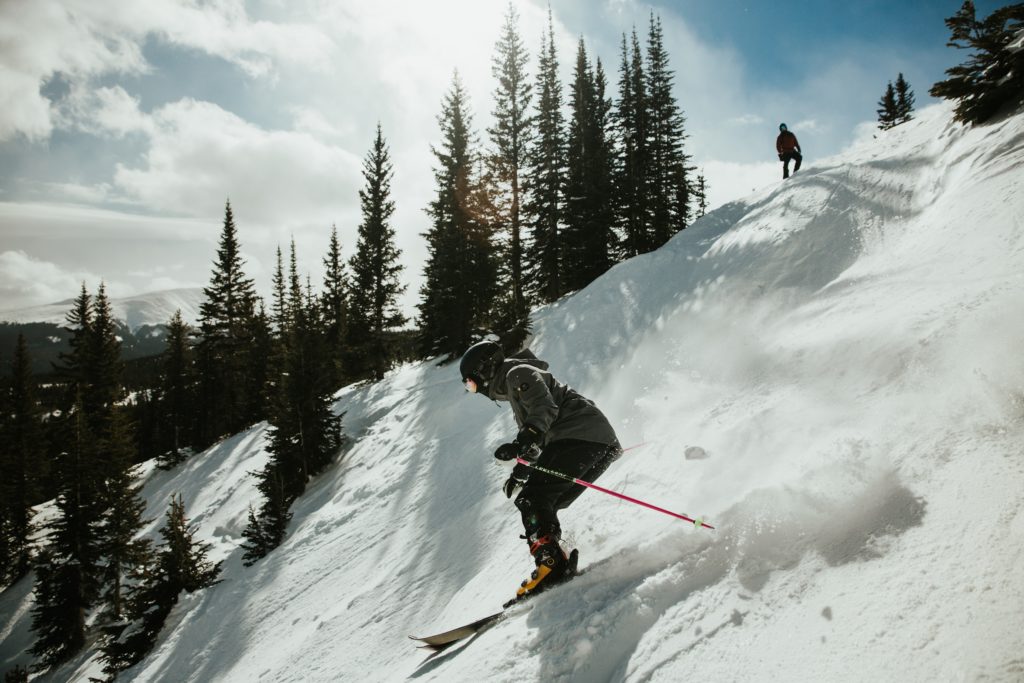The thrill of gliding down snow-covered slopes, the wind in your face, and the adrenaline rush – winter sports enthusiasts know the joy that skiing and snowboarding can bring. While both activities share the same snowy canvas, they have distinct techniques and styles. In this article, we’ll explore the differences between skiing and snowboarding and provide insights on how to leverage your existing skills to seamlessly switch between these exhilarating winter sports.
Understanding the Basics:
Skiing: Skiing involves navigating the slopes with a ski on each foot, using ski poles for balance and propulsion. The skis are parallel to each other, allowing for a more straightforward forward motion. Skiers face forward, and turning is achieved by shifting body weight and angling the skis.
Snowboarding: Snowboarding, on the other hand, is a single-plank sport where riders descend the mountain with both feet strapped onto a single snowboard. Snowboarders ride sideways, facing the slope, and steering is primarily done by shifting body weight and making use of the edges of the board.
Differences in Technique:
- Turning and Control:
- Skiing: Skiers make turns by angulating their bodies and edging the skis.
- Snowboarding: Snowboarders use a technique called carving, involving the edges of the snowboard to initiate turns.
- Balance and Body Position:
- Skiing: Skiers maintain a more upright position with their weight evenly distributed between both skis.
- Snowboarding: Snowboarders adopt a lower, more crouched stance with weight predominantly on the front foot.
- Terrain Negotiation:
- Skiing: Skiers can easily navigate flat and uphill terrain by using ski poles and the sliding motion of skis.
- Snowboarding: Negotiating flat terrain on a snowboard may require unbuckling one foot to skate or walking.
Switching Between Skiing and Snowboarding:
If you’re proficient in one of these winter sports, transitioning to the other can be an exciting challenge. Here’s how you can leverage your existing skills:
- Balance and Body Awareness:
- Skiing: The balance skills developed in skiing can be advantageous for snowboarding, where a lower center of gravity is crucial.
- Snowboarding: Snowboarders often have enhanced edge control, a skill that can benefit skiers, particularly in carving turns.
- Turning Techniques:
- Skiing: Skiers can transfer their understanding of turning dynamics to initiate smoother turns on a snowboard.
- Snowboarding: The ability to carve on a snowboard can translate to improved edging and turning skills when skiing.
- Edge Control:
- Skiing: Skiers’ familiarity with edge control aids in navigating icy or challenging conditions when snowboarding.
- Snowboarding: Snowboarders often develop a keen sense of edge control, enhancing their ability to carve and navigate varying snow conditions on skis.
Conclusion:
Whether you’re a seasoned skier looking to try snowboarding or vice versa, the key to success lies in recognizing the shared fundamentals of balance, turning, and edge control. Embrace the challenge, leverage your existing skills, and soon you’ll find yourself mastering both skiing and snowboarding, ensuring a winter filled with diverse and thrilling mountain adventures.

